10 Types of Digital Cameras (With Pictures)
Last Updated on
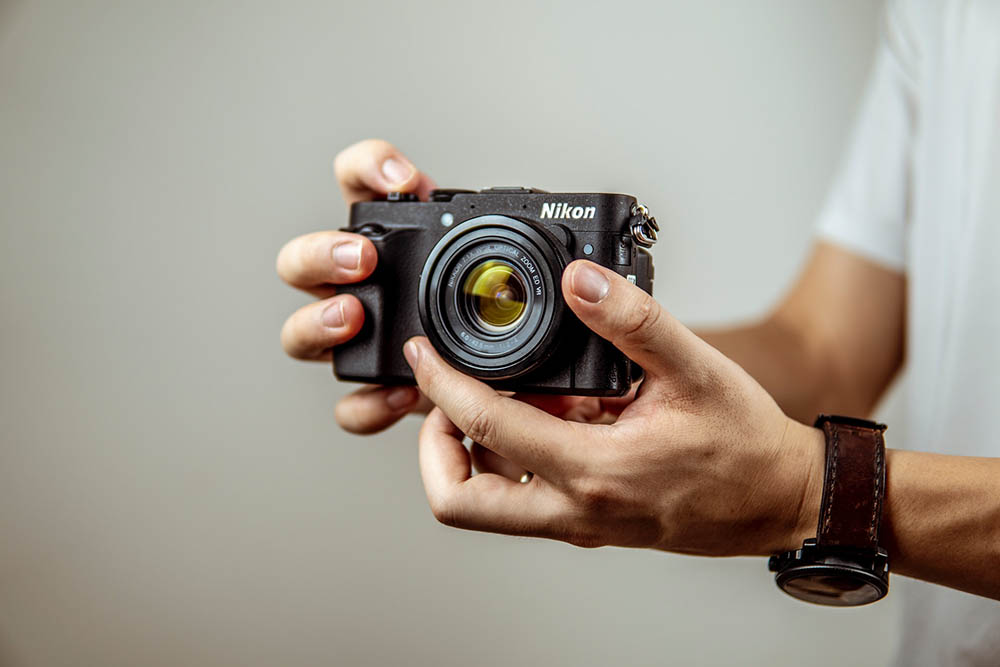
With recent innovations in camera technology, digital photography has now become more accessible than ever. Finding the best digital camera can be overwhelming due to the range of options and technical jargon involved. Understanding your options before purchasing a digital camera is important, especially if you want to upgrade from your smartphone camera. For this reason, we’ve put together this list, diving into the pros and cons of each digital camera so you can make an informed decision before purchasing the one that’s right for you.

The 10 Types of Digital Cameras (With Pictures)
1. DSLR Cameras

Digital single-lens reflex (DSLR) cameras are one of the most popular options among photographers, known for capturing images with stunning quality and state-of-the-art speed. DSLRs are some of the most adaptable cameras available and give photographers flexibility in their shooting with an array of customization options. The DSLR also allows you to interchange lenses, which can drastically improve the quality of your images.
Since DSLR cameras are fitted with large and advanced sensors, they are superior when shooting in low light conditions. This high-quality camera retains much of its value over time and is a great option for hobbyists and professionals alike.
- Long battery life
- Effective low-light shooting
- Autofocus feature for multiple shots
- Durable
- Mirror focused, so what you see in the viewfinder may not represent your final shot
- Pricey to buy and maintain
- Can be bulky and heavy, especially when fitted with large lenses
- Sharp learning curve for operation
2. Bridge Cameras
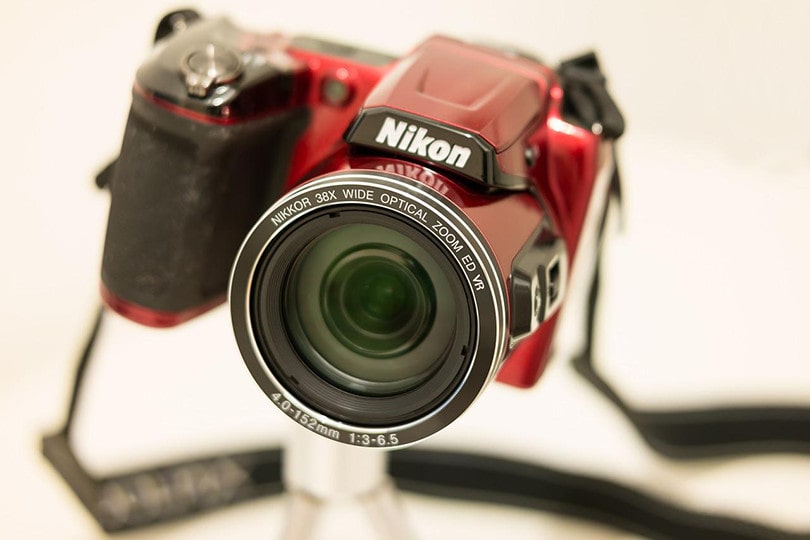
Bridge cameras have been used since the 1980s and were named due to their features “bridging the gap” between single-lens reflex (SLR) and point-and-shoot cameras. This digital camera generally features an array of manual controls, including shutter speed, ISO sensitivity, aperture, and color balance. Bridge cameras are equipped with long zoom lenses that lend them incredible super-telephoto capabilities. For this reason, “superzoom camera” is often used interchangeably with “bridge camera.”
- Great super-telephoto capabilities
- Affordable
- Viewfinders are a standard feature
- Single lens limits expansion capability
- Shoots lower quality images
3. Mirrorless Cameras
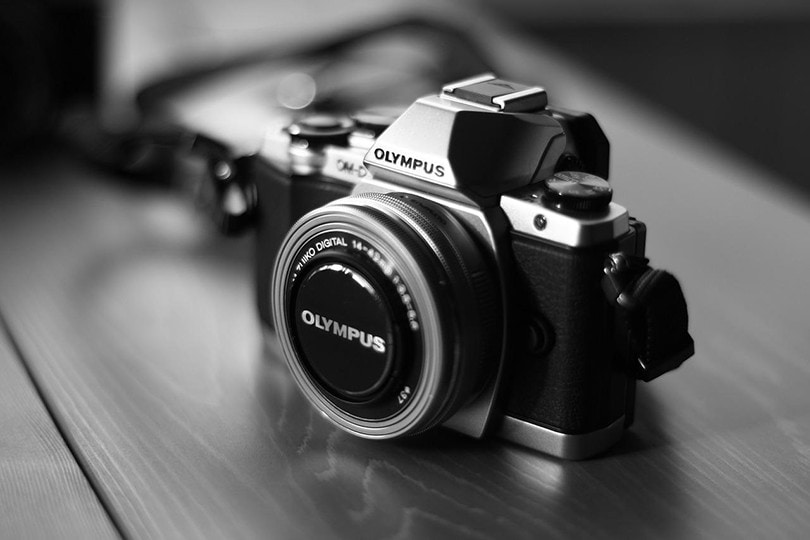
As the name implies, mirrorless cameras do not use a mirror to reflect the image into a viewfinder. Although they are suited for interchangeable lenses, they have an unexpectedly slim and compact body because there is no need for a mechanical mirror. The only moving part of this camera is the shutter, which is usually mechanical or electric on higher-end models. Mirrorless cameras are great options for hobbyists as they are suited for both photography and videography.
- Relatively small and lightweight
- Viewfinder can be used in video mode
- Fewer moving parts make mirrorless cameras quieter than others
- Limited lens selection
- Low battery life
- Small sensors make capturing quality images in low light conditions difficulty
4. Action Cameras
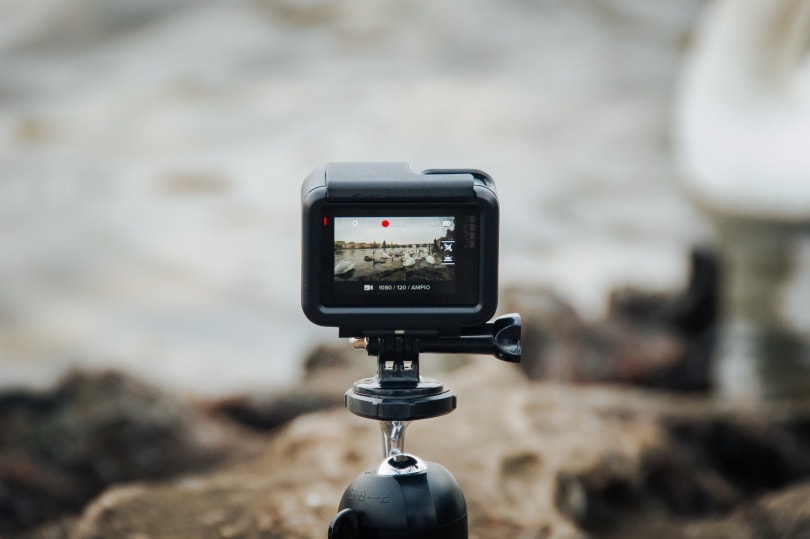
Action cameras are compact, sturdy, and seemingly anything-proof. They are digital cameras designed to capture the action while being immersed in it, often requiring little to no interaction once recording has begun. Action cameras are often mounted to helmets, handlebars, chest straps, surfboards, and more to capture extreme sports. They are usually fixed in a way that capture’s the user’s perspective and can be fitted with an endless array of customizable accessories.
Many modern action cameras can shoot in 4K, allowing you to capture adrenaline-pumping thrills such as scuba diving, skateboarding, rock climbing, paragliding, windsurfing, and more in mind-blowing quality.
- Lightweight and compact
- Versatile
- Durable and rugged
- Many accessories that may take up a lot of space
- Wide field of view only
5. 360 Cameras
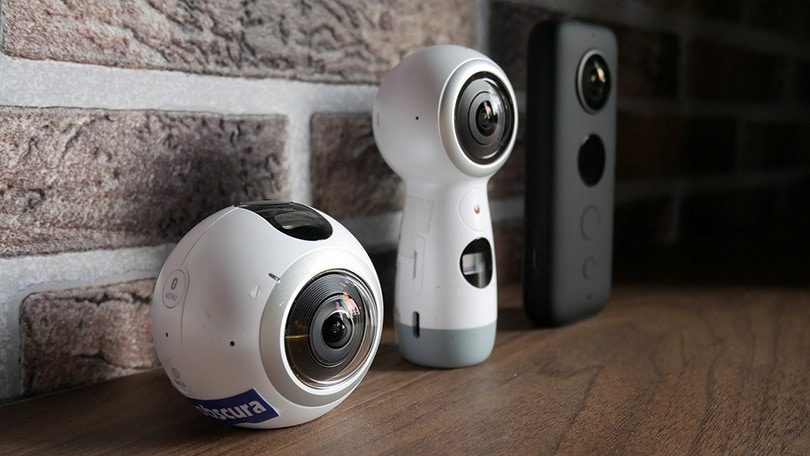
360 cameras, also known as omnidirectional cameras, capture the entire field of view around them. They are an integral part of virtual reality (VR) simulations and have been rising in popularity within the interactive entertainment industry. Usually, two lenses or “eyes” are used to have a field of view wide enough to capture the surrounding area. 360 cameras are one of the latest developments in the photography field and have endless applications. They have been growing in relevance recently because of their ability to bring anything from live concerts to sporting events right to a viewer’s home.
- Auto exposure and pan focus features
- Portable
- Easy to use
- Panoramic views
- Photographer almost always appears in the photo
- Zoom function is often lacking
6. Film Cameras
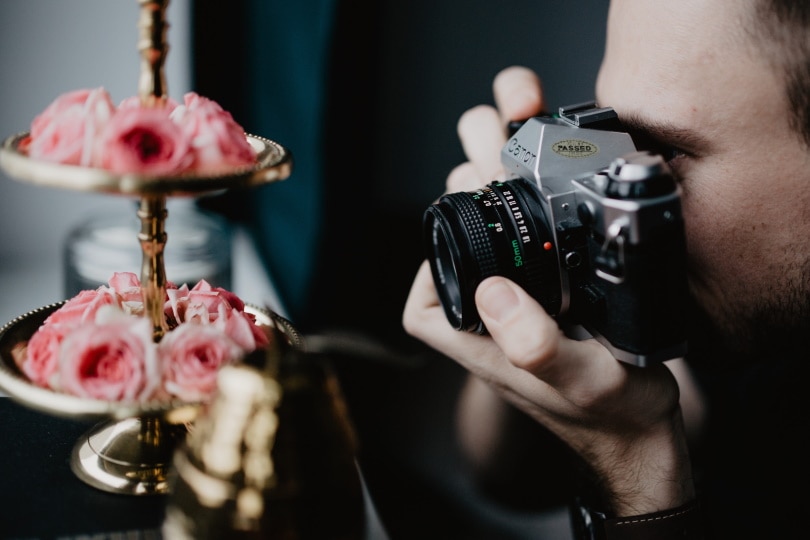
Film cameras are an older technology that use photographic film to produce visible images. Most film is usually coated in plastic and covered with a light-sensitive emulsion that forms an image when exposed to light. When the film is loaded into the camera, light passing through a prism creates “exposures” of each image. The film can then be developed through a timed, chemical process that transforms the latent image by applying an alkaline solution that brings out the true picture.
- Higher dynamic range for capturing subtle details in black and white
- Good resolution
- Uses film that must be developed
- Film and development are expensive
- Storing film takes up a lot of space
7. Compact Cameras
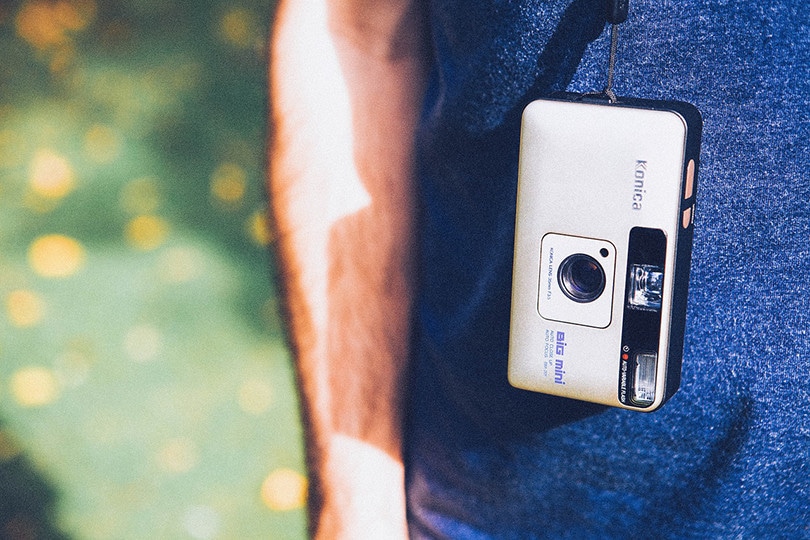
Compact cameras, also known as point-and-shoot cameras, are really easy to use and have a variety of preset settings. The operation of a compact camera is mostly automated, with many using focus free lenses. Many compact cameras rely on automation to select the best exposure settings and are great for beginners. Compact cameras are by far the most popular and widely sold cameras, however, their market presence has declined with the rise of camera phones.
- Easy to use preset modes
- Very affordable
- Very sturdy and resistant to everyday wear and tear
- Noise is kept to a minimum due to few moving parts
- Lower image quality
- The viewfinder is usually small or inexistent
- Few manual controls
8. Medium Format Cameras

Medium format cameras are some of the highest-quality digital cameras on the market and have widely been used in fashion and advertising photography. They are known for the supreme image quality they produce which delivers nearly perfect color replication. Medium format cameras use the 120 film size in their operation or an imaging sensor designed to imitate that size. Traditional medium format cameras are modular and customizable, with interchangeable parts such as the viewfinder, focus system, lenses, and more.
Medium format cameras are loved by professional photographers due to the distinct look and feel of the images they produce. Often, the images will have a lack of perception distortion and offer a color range much like what we see in real life. Because of the top-tier image quality medium format cameras produce, they can be very expensive which may make them inaccessible to hobbyist photographers.
- Incredible resolution
- High dynamic range
- Minimal shutter vibration
- Requires no batteries or chargers
- Big and heavy
- Expensive
- Lens and accessory selections are limited
- Manual shooting and operation
9. Instant Cameras

Instant cameras are truly the best of both worlds, inheriting the best qualities of both film and digital cameras. Instant cameras use a self-developing film which is printed shortly after taking a shot. This immediacy is what makes instant cameras so popular and gives each photo a distinct and iconic look. Instant cameras are widely accessible and generally inexpensive, making them a top choice among travelers. However, due to the self-developing nature of the film, replacing it can become somewhat costly.
- Compact and portable
- The film develops almost instantly
- Relatively inexpensive
- Easy and intuitive to use
- The film is quite expensive, leading to a higher cost per photo
- No editing capabilities
10. Smartphone Cameras

Smartphone cameras are most people’s first introduction to photography and have been rising in quality and popularity over the past few years. Modern smartphone cameras have tons of features built into them and are usually backed up with computer software and algorithms to ensure you get the best shot. Many people like shooting with smartphone cameras because of how quick and easy to use they are. In addition, all your smartphone images can be backed up to the cloud, eliminating the chance of losing a tiny SD card or roll of film. Because smartphones have thousands of other features, editing and sharing your photos has never been easier.
On the downside, most smartphone cameras do not have an optical zoom, making it difficult to capture quality images of distant subjects. Instead, these cameras use a digital zoom which severely degrades an image’s quality.
- Edit photos on-the-go
- Auto backup features
- Quick and easy to use
- Regular software updates
- Almost everybody has one
- Struggle with low light conditions
- The ergonomics of a smartphone are not very compatible with photography
- No optical zoom

Final Thoughts
Before buying a digital camera, you should try a few types out to find the one that feels the best and resonates with your photography style. Whether you are a beginner, amateur, or professional photographer, there are a wide range of digital cameras to choose from. Although you should take some time to get familiar with a variety of different cameras, you have to remember that a camera is only as good as the person using it. Regardless of what camera you choose, you can still manage to take great photos if you are passionate about photography and capturing your vision.
See also:
Featured Image Credit: Kai Cheng, Unsplash
About the Author Robert Sparks
Robert’s obsession with all things optical started early in life, when his optician father would bring home prototypes for Robert to play with. Nowadays, Robert is dedicated to helping others find the right optics for their needs. His hobbies include astronomy, astrophysics, and model building. Originally from Newark, NJ, he resides in Santa Fe, New Mexico, where the nighttime skies are filled with glittering stars.
Related Articles:
Monocular vs Telescope: Differences Explained (With Pictures)
How to Clean a Refractor Telescope: Step-by-Step Guide
How to Clean a Telescope Eyepiece: Step-by-Step Guide
How to Clean a Rifle Scope: 8 Expert Tips
What Is a Monocular Used For? 8 Common Functions
How to Clean a Telescope Mirror: 8 Expert Tips
Brightfield vs Phase Contrast Microscopy: The Differences Explained
SkyCamHD Drone Review: Pros, Cons, FAQ, & Verdict
